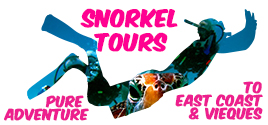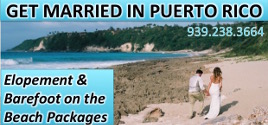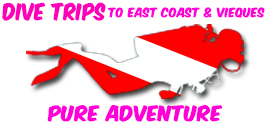Currently not available: Volunteer to Help Save Puerto Rico’s History
1/22- I don’t see this volunteer activity restarted yet, so keep checking their page for available dates
Thousands of years ago, there were humans inhabiting the land that now comprises Las Cabezas de San Juan Nature Reserve in Fajardo. We know that because archaeologists have found evidence of their lives here — human skeletons, bones, shells, tools, and clay pots. These first indigenous people lived by the sea and enjoyed the abundance of food it provided.
But now, this historical site is at risk of being lost due to actions of the waves and wind, and the rise in sea level. It is a race against time to save the remains — and they need your help!
Background

Las Cabezas de San Juan Nature Reserve (Reserva Natural de las Cabezas de San Juan) is owned by the Puerto Rico Conservation Trust (El Fidescomisio de Conservación de Puerto Rico), with the goal of protecting the ecosystems and natural beauty of the area.
Besides the natural treasures on the property, it has a number of historically significant archaeological sites. These sites have been dated to the Igneri period, around 300-600AD (which is pre-Taino).
The Fidescomisio realizes the importance of these findings, so they have joined together with the Institute of Puerto Rican Culture (Instituto de Cultura Puertorriqueña or ICP) to study and preserve the items. Archaeologist Dr Carlos Perez Merced, along with students and interns from various universities, has been working since 2011 to uncover and document the items found in Las Cabezas de San Juan Nature Reserve.

The first site they decided to excavate is at Playa Jayuya, on the north-eastern tip of the reserve. They chose this site due to its imminent destruction from the action of the ocean and the wind. The excavation site is right at water’s edge, so they are concerned about hurricanes and rising sea levels that could wash it all away.
They are asking for volunteers to help get the material to safety, and then help clean and organize it all. In the summer (June, July and August ), they will be dong most of the work at the excavation site, retrieving material. The program is called “Excavación arqueológica en Playa Jayuya”. The rest of the year they work in the laboratory, sorting, cleaning, and cataloging their discoveries. However, if you don’t want to work, but just see and learn, they offer an educational tour of the excavation site, where you walk around and check it out.
Have you got what it takes to be a volunteer?
Note- In the summers, there is the volunteer work we did, but the rest of the year there is a 2 hour tour…so you do get to go and see, learn, experience and maybe do some of the work, but not the really hard stuff! If you want to go, make sure you watch which tour you are reserving.
The volunteer work at the archaeological site is not a walk in the park. They need people who are willing to work for the better part of a day.

If you volunteer at the Fajardo location, you need to be able to hike up and down steep hills, while carrying 5-10 pounds of weight. You need to maybe stand thigh deep in the ocean and bend over a lot. You need to be willing to work in direct sun, rain, waves…no matter the weather.
If you volunteer at the lab, you’ll be working inside in Ceiba, sitting for hours and lifting bags of excavated material.

Minimum age for volunteers is 12 years old. The day is conducted primarily in Spanish. So unless you understand Spanish, you may miss out on a lot of the interesting info. When we went, there were a few students, interns and Dr Carlos that were comfortable enough with English to make sure we understood (a big thanks to Mario and Luis!), but that may not always be the case.
Our Volunteer Day in July
Note- If you can’t do the volunteer work we did, they offer a 2 hour educational tour…so you do get to see, learn, experience, but not the really hard stuff! But you still will have to be able to hike up and down the big hill!

Our day started at 8am, where we met up with the other volunteers at Las Cabezas de San Juan Nature Reserve in Fajardo. After signing in, we were given a brief overview of the work that the Fidescomisio does, and some orientation about the nature reserve and the area where we would be working.
After everyone arrived, they drove our group of volunteers, along with Dr Carlos and his group of students/interns, to the hiking path that leads over the hill and down to the beach.

Everyone in the group got something to carry to the site — buckets with tools, gallons of drinking water, cooler, etc. Then we hiked up and down a steep hill on a single line path (you may get a little scratched) to the beach.
It took about 15 minutes to hike to the beach, and then we spent about another 15 minutes walking along the beach to the excavation site.
Along the way, Dr Carlos told us about their current excavation, and other important findings in the reserve they have yet to study (like caves). He also showed us pottery, shells and human bones encrusted in the hardened sediment at water’s edge and in the exposed dunes.

When we got to the excavation site, he told us what they do, how they do it, and why they do it the way they do. They don’t just gather up everything they see — their process is methodical. It’s really interesting stuff!
Then we got to work. One of the researchers filled buckets with the sandy soil from the site, and we carried buckets to the ocean’s edge (or the screening area near the site). Soil was dumped into sifters, which sometimes is carried into thigh-deep water or just on land, and sifted out the soil exposing all the “stuff”. There was almost always some shards of pottery, shells, rocks and bones (mostly fish). Every load was different! I had a great time looking through the treasure we “discovered”.

After being sifted, the material remaining in the sifter was bagged. We refilled the sifter, sifted, and repeated these steps … over and over … for hours and hours. Later we also got to go into the actual excavation site and use the trowels and brushes to carefully expose things in the dig. We could find the larger pottery and bone pieces here and move the dirt for someone else to sift. At the end, we had a bunch of bags full of “goodies” to take to the lab.
Of course you can go at your own pace, and can take rests when you want. We worked like this for about 3 or 3½ hours. Then we packed up all the stuff, and had to carry all our filled bags back down the beach and over the hill. It was a hot, heavy hike up the steep hill. But we took our time and rested when needed.

Then we brought everything back to the lighthouse, where we got a little cleaned up. They also showed us the work/storage room, and a human skeleton from the dig site. It is amazing work they are doing!
The bagged stuff that we carried back from the excavation site will be stored in the lighthouse until the lab work (cleaning, sorting) begins.
I loved it! I couldn’t wait to see what we exposed in the excavation site and in every tray we sifted! I enjoyed learning about the process of an archaeological dig, and I felt like I was doing important work by helping to get the material to safety for study. They will be doing this for at least another few years or so, along with cleaning and cataloging the pieces they found.
Spending the day doing this really makes me appreciate all the work involved when you view archaeological materials that you see in museums.
I haven’t helped with the cleaning, sorting and cataloging yet, but that sounds interesting too!
Other info & observations
These programs are open to 10 people per day. Sign-up is online, through the Para la Naturaleza web site. The day that we went, all 10 slots were booked, but only 5 volunteers bothered to show up. Look people — if you are going to sign up and take a space, at least have the common courtesy to show up and work!

For volunteering at the excavation site, wear the right clothes and come prepared — bring water bottles, sun glasses, a hat, and wear sunscreen. Wear shoes and pants that can get wet. I had my bathing suit on under lightweight clothes. We ended up working barefoot. Don’t bring too much with you — it will be exposed to the elements: sand, sun, sea water, and maybe rain. But bring a snack (they provide some, but you may want something more filling).
I have done a number of the tours at Las Cabezas de San Juan Nature Reserve, and was really interested in going to otherwise off-limits areas of the reserve. There were great views, and a historical perspective about the land that the reserve occupies. It is a beautiful place.

In non summer months, if you are still interested in the discoveries and work they are doing at the dig, Para la Naturaleza offers a few tours about the subject matter. Check out the tour “Archaeology at the edge of the sea”. Or maybe volunteer for the cleaning part which might be less physically demanding. Check their site for more information.
Eventually, many of the archaeological discoveries will be displayed at the lighthouse.
Details
The volunteer working program is free of cost (June-Aug). The rest of the year , the education tour about the work costs $14 pp.
The “Excavación arqueológica en Playa Jayuya” volunteer work takes place Tuesday through Saturdays, from 8am-12noon. The Walking/educational tour (Sept-May) is Wednesday and Sundays (sometimes additional days), from 10:30m until about 2pm at Las Cabezas. The Lab session (sept- May) is on Saturdays 8am-2pm At Ceiba. Lab work is also is free volunteer work.
For the excavation work at Las Cabezas, wear clothes and shoes that can get wet and dirty. Bring drinking water, sunscreen, hat, sunglasses, and a complete change of clothes. For the lab work (in Ceiba), wear light weight, comfortable clothes.
You can make reservations for “Excavación arqueológica en Playa Jayuya” through the Para la Naturaleza web site. or https://reservaciones.paralanaturaleza.org/eventDetails.jsf
For the Lab work- Para la Naturaleza web site
Click on a placename below to view the location on Google Maps ...
Puerto Rico Day Trips LLC assumes no responsibility regarding your safety when participating in the activities described in this article. Please use common sense! If your mother or that little voice in your head tells you that you are about to do something stupid … then don't do it!














